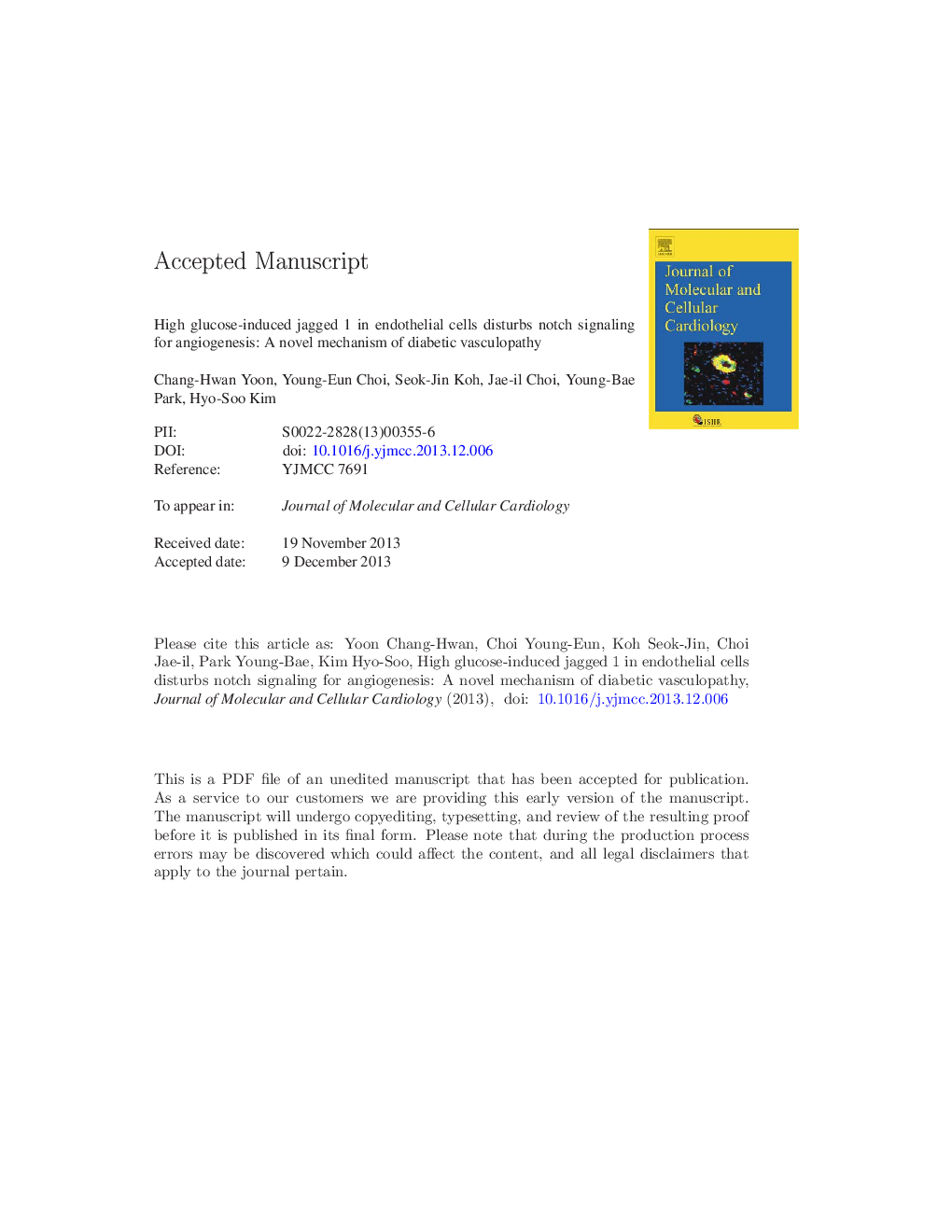| Article ID | Journal | Published Year | Pages | File Type |
|---|---|---|---|---|
| 8474936 | Journal of Molecular and Cellular Cardiology | 2014 | 34 Pages |
Abstract
Angiogenesis is a multistep process which is orchestrated by intercellular signaling. We developed an in vitro model of human angiogenesis to identify a pathologic angiogenesis and intercellular signaling in high glucose condition. We co-cultivated human endothelial cells (ECs) and smooth muscle cells (SMCs) in a spheroid on an SMC monolayer for 7 days either in high glucose or in control condition. We analyzed vascular growth and expression of notch or its ligands with confocal microscopy. Abnormal angiogenesis by high glucose condition was characterized by (1) increased sprouting and branching (high glucose vs. normal: number of sprouts 20.3 ± 1.5 vs. 13.7 ± 2.9, p = 0.024; number of branching points 7.6 ± 2.5 vs. 2.3 ± 2.1, p = 0.047), (2) decreased vascular diameter (diameter of the tubes 13.4 ± 6.1 μm vs. 19.1 ± 8.8 μm, p = 0.012) and (3) destabilization of the tubes. We identified that high glucose induced jagged 1 and suppressed notch1 in ECs whereas it did not affect Dll4. Constitutive jagged 1 overexpression or inhibition of notch1 in ECs induced abnormal angiogenesis as the high glucose condition did. Endothelial-specific shRNA targeting jagged 1 rescued the aberrant angiogenesis in high glucose condition. High glucose condition induced an abnormal endothelial intercellular signaling leading to aberrant angiogenesis. It is a novel mechanism of diabetic microvasculopathy which can be a therapeutic target beyond glucose control.
Related Topics
Life Sciences
Biochemistry, Genetics and Molecular Biology
Cell Biology
Authors
Chang-Hwan Yoon, Young-Eun Choi, Seok-Jin Koh, Jae-il Choi, Young-Bae Park, Hyo-Soo Kim,
